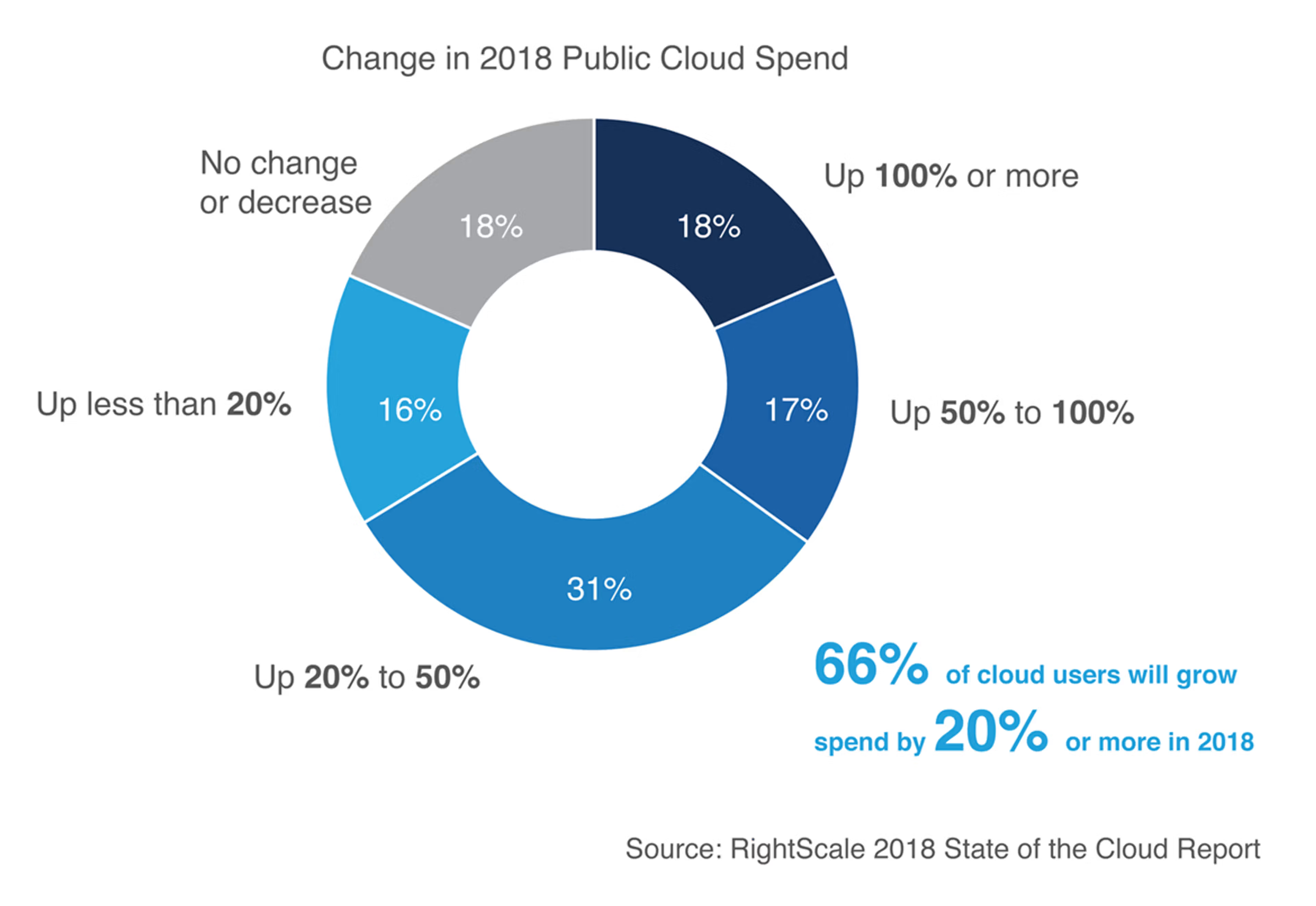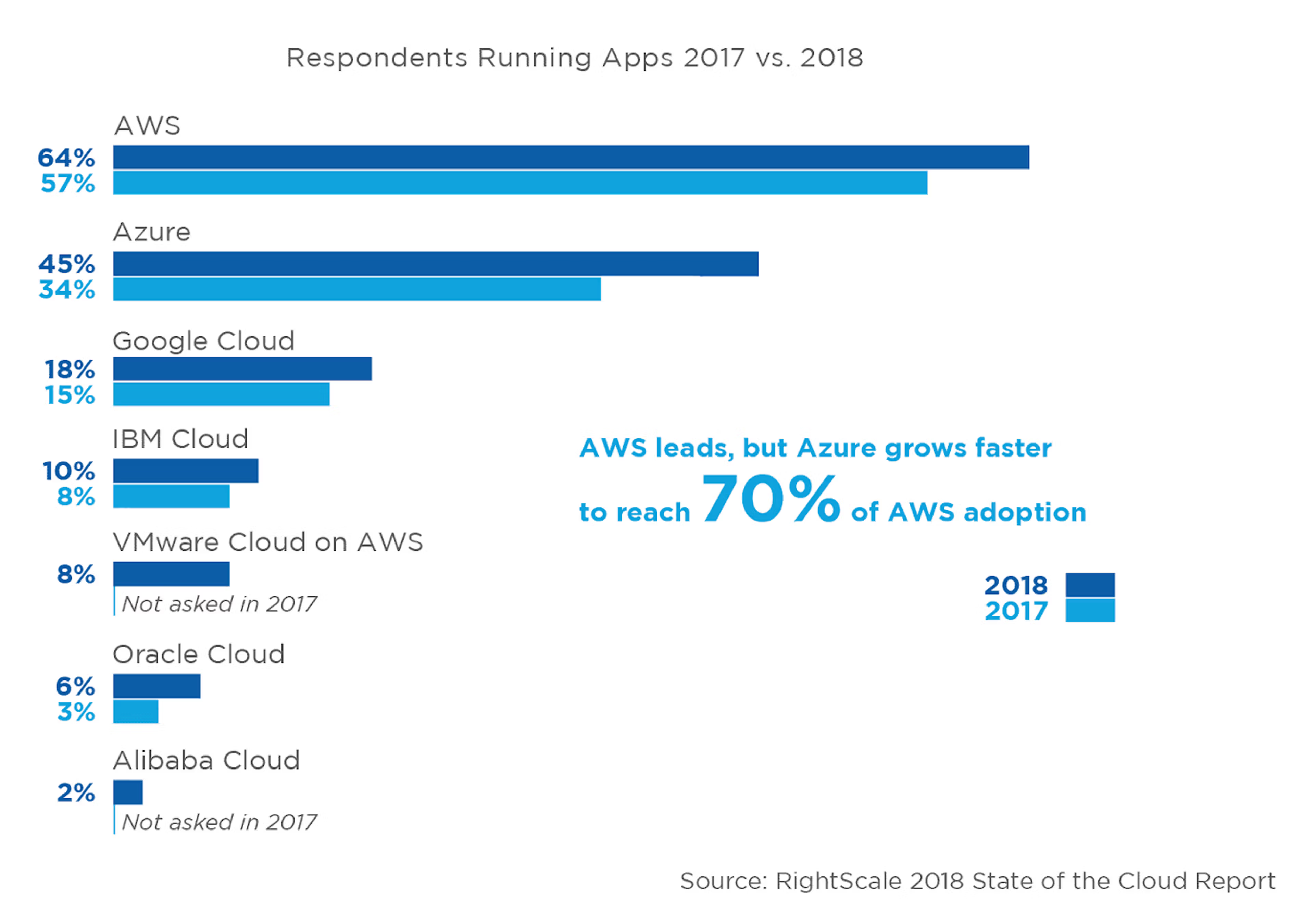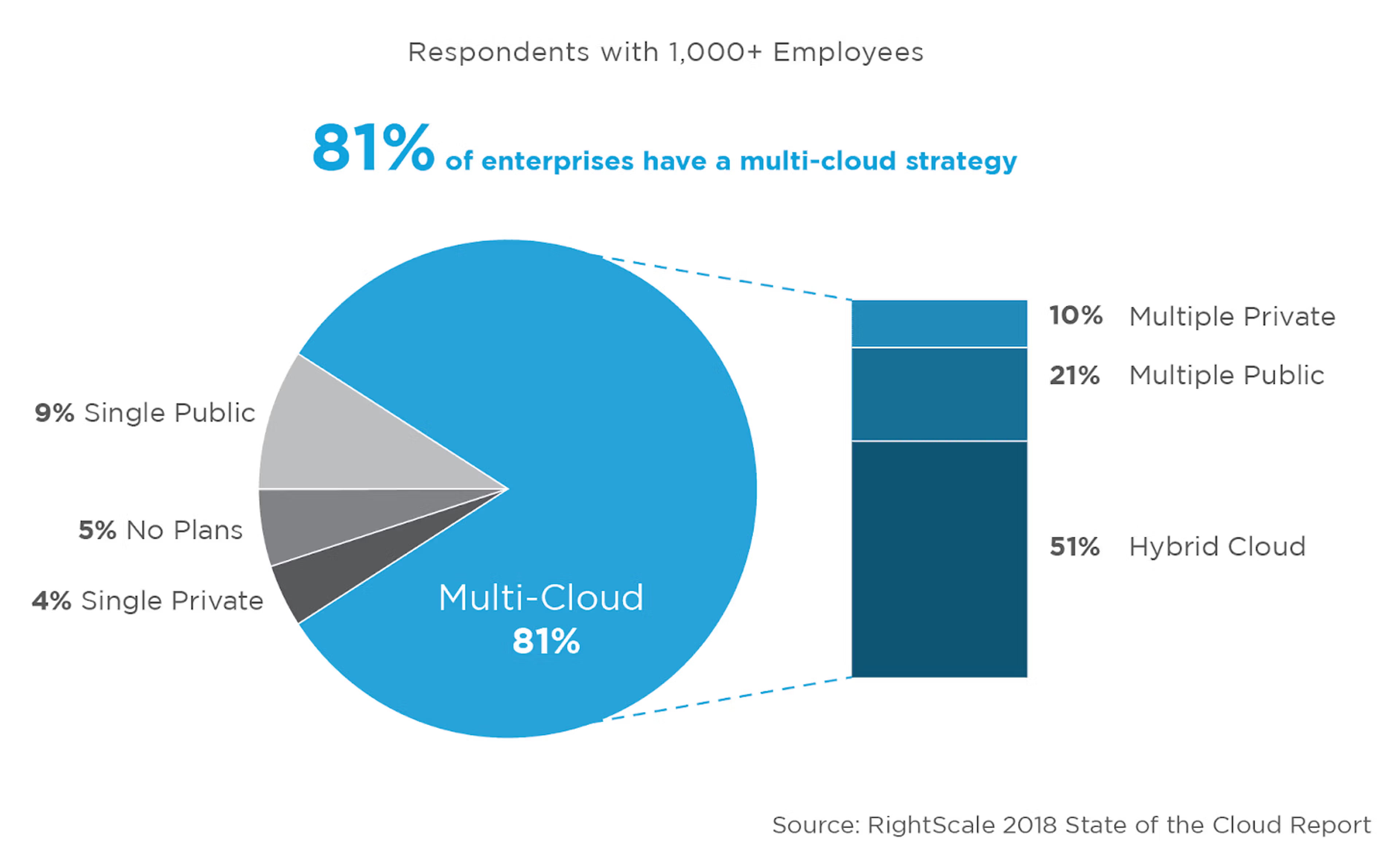What is Hybrid Cloud?
Hybrid cloud is defined as a computing environment that incorporates infrastructure from multiple platforms and data centers. Most often, it’s a combination of on-premises resources with those offered by a cloud service provider. But it could also consist of multiple cloud platforms and services with no on-premises component.
Introduction to hybrid cloud architecture
Cloud computing is everywhere and will continue its strong growth. However, some tooling incompatibilities, security constraints, or cost considerations could prevent some components from moving to the cloud.
Since the start of modern cloud computing in 2006, the cloud industry has erupted into a $153 ≈billion market, projected by Gartner to grow more than 21 percent per year. This next generation model for server and compute resource consumption embodied a fundamental shift for enterprise companies, and a new surface for them to build applications and services. Before the cloud came into play, the on-premises data center, hosted within a company’s walls, was the only option. At that time, IT departments were responsible for acquiring and configuring the machinery to power the organization’s technological front.
When the cloud was first introduced, its reliability and security was met with significant skepticism. But, as time marched on, cloud service providers such as Amazon, Microsoft, Google, and IBM poured engineering grit into their cloud products. And popular applications, such as Netflix, declared they were running workloads off-premises. It is important to emphasize that these early adopters had the luxury of growing up in a cloud world. For them, the time-to-market benefit from deploying in the cloud far outweighed the time and cost it would take to build an on-premises data center.
But what about the case where a successful foundation was already in place, with an in-house technology infrastructure, and millions were already invested? Should companies in that position fight to maintain the status quo?
- Consider the cost savings Dropbox enjoyed after building its own technology infrastructure and moving away from the public cloud.
- What about the proliferation of developer tooling found among the public and private clouds? It often causes internal strife over which cloud to choose for a given task.
- And don’t forget about the security and governance concerns when placing sensitive information in data centers that are not hosted in-house.
The paradox of choice defines the cloud world, with a sea of options that are difficult to navigate and decipher. Today’s business needs continue to demand a cloud strategy. So, these challenges are here to stay and a hybrid cloud strategy has to be a core focus for innovators and decision makers within every enterprise.
How do leading companies define hybrid cloud?
The technology sector moves faster than most, and the cloud age is at a stage of rapid transformation. Thought leaders are striving to define the terminology and jargon used to describe this evolving ecosystem. It can be difficult to communicate in this environment as common terms have not yet reached an established standard.
In order to help you understand exactly how hybrid cloud is being defined, we’ve collected definitions from top companies across the technology landscape. Let’s take a look.
RedHat
A hybrid cloud is a combination of one or more public and private clouds orchestrated by management and automation software that allows workloads, resources, platforms, and applications to migrate between environments.
Gartner
Hybrid cloud refers to policy-based and coordinated service provisioning, use, and management across a mixture of internal and external cloud services.
ZDNet
One or more public clouds connected to something in my data center. That thing could be a private cloud, that thing could just be traditional data center infrastructure.
Amazon
In cloud computing, hybrid cloud refers to the use of both on-premises resources in addition to public cloud resources.
Microsoft
A hybrid cloud is a computing environment that combines a public cloud and a private cloud by allowing data and applications to be shared between them.
IBM
A hybrid cloud uses a private cloud foundation combined with the strategic integration and use of public cloud services.
Understanding the different types of cloud database technologies
As the name suggests, hybrid cloud is a mixture of multiple cloud types and deployments.
Let’s review the options.
On-premises
Technology resources, data centers, and sources that are hosted within a company’s infrastructure. Typically this means that the company purchased hardware and is connected via a private network.
Learn more about on-premises challenges
Public cloud
Technology resources, data centers, and sources that are hosted by a cloud service provider off-premises. These reside alongside other resources that are not occupied by a single company and are accessible via the public internet.
Take a look at our resources about three leading public cloud providers: Microsoft Azure, Amazon Web Services, and Google Cloud Platform.
Private cloud
Technology resources, data centers and sources that are hosted either by a cloud service provider off-premises or within a company’s infrastructure. Typically, this is in conjunction with deployment management, container, and virtual machine technologies. Solutions like VMware, OpenStack, and Kubernetes are often in the mix. These resources are only available and accessible to a single company via a private network.
Learn more about the private cloud with our series of videos from Accelerate
Hybrid cloud
Technology resources, data centers and sources that incorporate infrastructure from multiple environments. Most often, it’s a combination of on-premises resources and those offered by cloud service providers. It also likely includes multiple cloud platforms.
This deployment opens up a range of new use cases
Multi-cloud
Technology resources, data centers, and sources that span multiple cloud service providers and on-premise resources. The difference between this and intercloud is that there is no traffic between the cloud service providers in a multi-cloud architecture. The network between the cloud-service providers and on-premises resources may be via a private network. This is a subset of hybrid cloud.
Understand why multi-cloud is good for your data
Comparing cloud architectures
| On-Premises | Single Cloud | Hybrid Cloud | |
|---|---|---|---|
| Ability to keep sensitive data in-house | ✔ | X | ✔ |
| Flexible access to global footprint | X | ✔ | ✔ |
| Choice of best of breed technology options | X | X | ✔ |
| High availability / disaster recovery | X | X | ✔ |
| Optimal control over SLAs | ✔ | X | ✔ |
| No complexity of managing across clouds | ✔ | ✔ | X |
| Avoid vendor lock-in / data autonomy / keep negotiating leverage | ✔ | X | ✔ |
| Easy to accommodate infrastructure of acquired businesses | X | X | ✔ |
A closer look at hybrid cloud
Gartner defines four different cloud deployment models that IT organizations are implementing, and all of them have some form of hybrid cloud at their core.

Architecture spanning
This strategy, where a business expands IT capacity with a cloud provider, may make sense for a variety of reasons, including the necessity to burst to the cloud for additional resources or to co-locate data where it is needed for performance or compliance factors. With this form of hybrid cloud, applications may live on infrastructure hosted by a cloud service provider and the data may reside within the company’s self-hosted data centers.
Use case specific
This describes a setup where enterprises have versions of the same application deployed in different locations based on the stage of development. For example, a company may prefer that development and test occur in the cloud for flexibility, while the production instance is running on specially provisioned in-house hardware. This case hinges on the fact that the application itself is not integrating with cloud-native services.
Multi-cloud
A multi-cloud approach is when a company runs different modern applications either all in the cloud or in an architecture spanning on-premises resources and also with those offered by multiple cloud providers. This model caters to a developer-first mindset. Application developers are not siloed to a particular cloud. Instead, they have the freedom to choose the technology that fits the task, whether it is offered by a cloud service provider or through custom, internal services.
Intercloud
This deployment is the evolution of the multi-data center, multi-residency design and features cross-cloud service provider traffic. It boasts the ability to avoid vendor lock-in while taking advantage of best of breed services. Here’s an example referenced by Gartner, “Microsoft's Power BI might connect to a Salesforce database residing outside of the Azure cloud infrastructure.”
All of the above types of hybrid cloud deployments come with their own set of caveats. It is important to design for the model that best fits the needs of the enterprise, where the balance of SLAs, cost, and technology offerings should drive decisions.
Industry trends for hybrid cloud
Before diving into hybrid cloud trends, it is useful to look at the larger cloud picture for a foundation. Clearly, this market is continuing to grow at an impressive pace.
Worldwide Public Cloud Service Revenue Forecast (billions of U.S. dollars)
| 2017 | 2018 | 2019 | 2020 | 2021 | |
|---|---|---|---|---|---|
| Cloud business process services (BPaaS) | 42.6 | 46.4 | 50.1 | 54.1 | 58.4 |
| Cloud application infrastructure services (PaaS) | 11.9 | 15.0 | 18.6 | 22.7 | 27.3 |
| Cloud application services (SaaS) | 60.2 | 73.6 | 87.2 | 101.9 | 117.1 |
| Cloud management and security services | 8.7 | 10.5 | 12.3 | 14.1 | 16.1 |
| Cloud system infrastructure services (IaaS) | 30.0 | 40.8 | 52.9 | 67.4 | 83.5 |
| Total market | 153.5 | 186.4 | 221.1 | 260.2 | 302.5 |
Hybrid cloud trends and increased adoption
If we group some sectors, we see that 66 percent of users will increase their cloud spend by 20 percent or more. Cloud is growing strong.

Public cloud spends for 2018
If we group some sectors, we see that 66 percent of users will increase their cloud spend by 20 percent or more. Cloud is growing strong. Within the cloud market, adoption is increasing throughout the field of competitors, with some clear front-runners.
AWS is leading, but Microsoft Azure is catching up, reaching 70 percent of the AWS adoption.

The strong majority of enterprises are adopting multi-cloud strategies, with 51 percent citing hybrid cloud
This must be taken with a grain of salt. As mentioned before, definitions for multi-cloud and hybrid cloud vary depending on the source. However, the trend cannot be denied. Companies are moving to the cloud to thrive in today’s enterprise economy, deploying powerful, mission-critical applications.

More than 80 percent of companies with one thousand or more employees use a multi-cloud approach. Avoiding vendor lock-in, is likely a common reason.
Gartner also states, “By 2020, most data and analytics use cases will require connecting to distributed data sources” and “most organizations' DBMS deployments will coexist in the on-premises and cloud worlds simultaneously — the hybrid cloud DBMS.” New articles are published every day highlighting companies migrating a portion of their stack to off-premises infrastructure. This trend shows no signs of slowing down.
At DataStax, 63 percent of our customers have applications running on clouds. More than half of those are deploying applications on multi-cloud, hybrid-cloud, or a combination of those infrastructure environments.
Read this whitepaper for more details
Hybrid cloud and DataStax Enterprise
DataStax Enterprise is the most powerful database designed for hybrid cloud. Whether public, private, or hybrid cloud, DataStax Enterprise easily spans across cloud regions and data centers with self-driving operational simplicity, allowing enterprises to easily deploy mission-critical applications across cloud environments without having to actually change anything about the applications.
A distributed cloud database enables you to leverage a hybrid, multi-cloud architecture to:
- Choose the services you want from each IaaS vendor with ease and ability
- Design your architecture with the cloud services you choose
- Geographically distribute data to meet governance and compliance requirements
- Implement services on your on-prem database and leverage resources from multiple clouds
- Seamlessly leverage tools offered by different IaaS vendors or move across vendors to scale for incredible data volumes, without downtime
- Protect apps and customer experience from service disruptions with the ability to replicate to on prem or across clouds, or evacuate regions due to outage concerns
Learn more about hybrid cloud
We have a variety of resources to help you continue learning about hybrid cloud deployments and distributed cloud databases:
Active everywhere built for hybrid cloud
Relational database management systems (RDBMS) have served many enterprises for over 4 decades. Listen to our podcast episode on this subject to learn more.
Why your enterprise needs a cloud strategy
David Waugh, SVP of Market Development at DataStax talks about Hybrid-Cloud Strategy and uncovers the truth about hybrid-cloud deployments and hybrid databases — aren’t they synonymous? Find out in this podcast!
The 4 superpowers of hybrid cloud databases
The market for cloud databases is on fire. According to a recent study, the global cloud database market hauled in $2.1 billion in 2015.
Hybrid cloud and eCommerce
Builders of ecommerce applications face unique challenges in today’s hyper-connected, lightning-fast, zero-attention-span environment.
What is hybrid cloud? Is it just hype?
Get the full breakdown on the popular question that's on many enterprises' mind: What is Hybrid-Cloud?
The journey to hybrid cloud with DataStax Enterprise: 5 keys to success
Improving development agility, reducing time to market, avoiding cloud outages—there are many reasons to move to hybrid or multi-cloud.